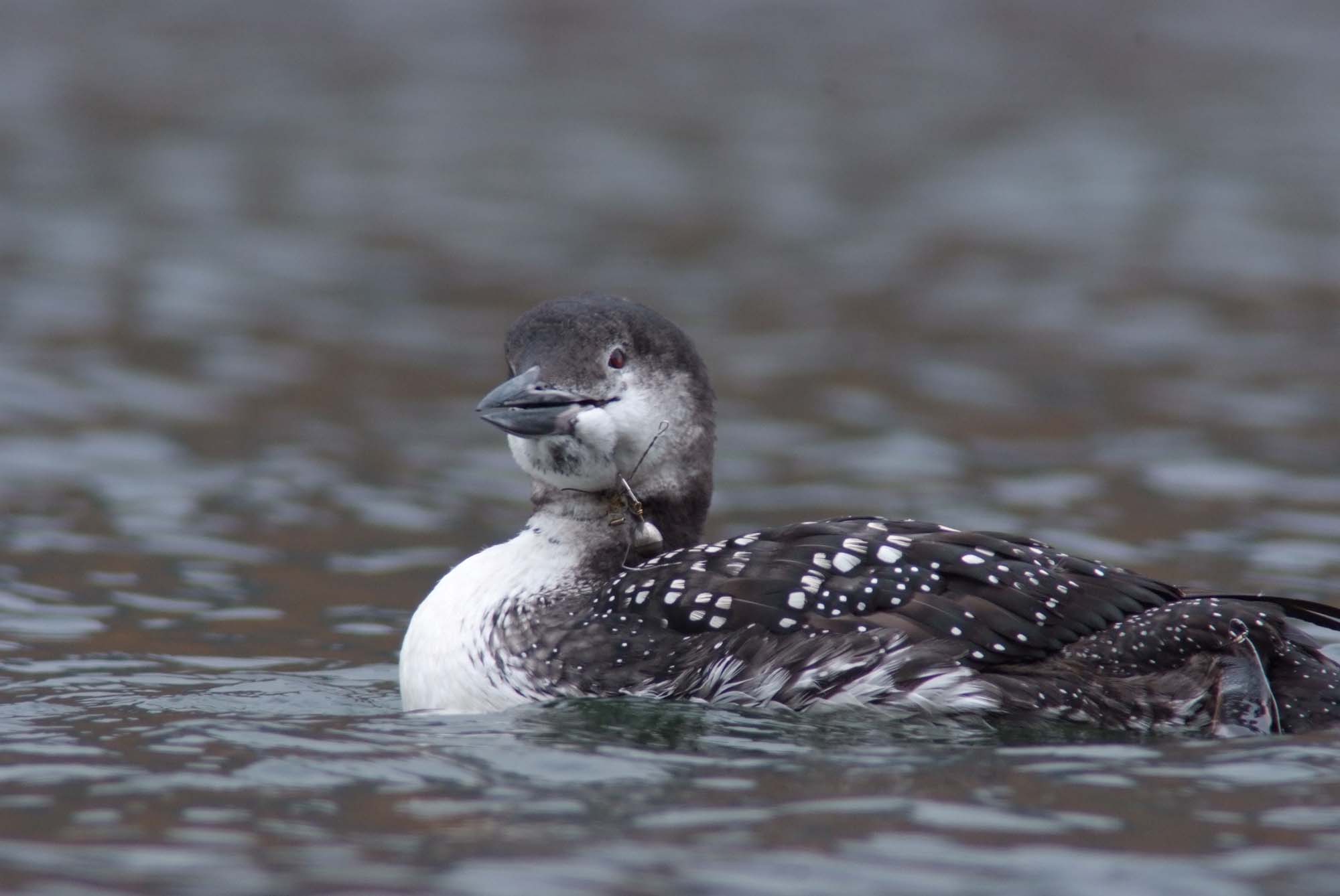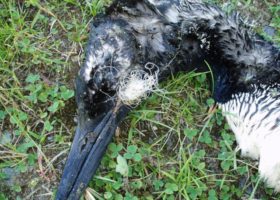
Common Loon entangled in a fishing lure and line on Lake Willoughby, Vermont. Photo courtesy of Ray Richer.
Lead and loons don’t mix. A new study1 based on long-term (1989–2012) mortality data of New Hampshire Common Loons, published last fall in The Journal of Wildlife Management, documents the troubling effects of lead fishing tackle on loons. The study found that the leading cause of death for adult loons in New Hampshire is ingestion of fishing tackle. Furthermore, researchers discerned that over the 24-year study period, annual mortality from lead poisoning averaged 1.7 loons, ultimately decreasing the adult population growth rate by 1.4% and the statewide population by 43%. For perspective, New Hampshire’s known adult loon population in 2012 was ∼600 loons; eliminating deaths from lead poisoning during the previous 24 years, that number might have been closer to 900 birds.

Loons will take live bait and lures. This loon died on East Long Pond in Woodbury, VT. Photo by Eric Hanson
The study also revealed that lead mortality rates are highly correlated to the most active fishing months (July and August), and that two-thirds of lead-poisoned loons had monofilament fishing line attached to ingested lead sinkers or jigs. These findings indicate that loons typically pick up lead from active angling, rather than plucking tackle from lake bottoms. Of note, lead-headed jigs accounted for 53% and sinkers 38% of the lead found in dead loons.
In part because of these findings, New Hampshire upgraded its law banning the use and sale of lead fishing gear to include jigs. Currently, Vermont’s law only bans the use and sale of sinkers that weigh 0.5 ounces or less.
On a positive note, lead-caused loon mortality has statistically declined in New Hampshire since lead fishing gear laws were implemented. In Vermont, recovered dead loons are sent to Tufts University for necropsies; thankfully, results have revealed only a few deaths due to lead tackle ingestion during the past five years.
Please fish responsibly, and download our handy guide for boaters to learn more about how to help ensure the welfare of these amazing but vulnerable birds.
1Tiffany Grade, Mark Pokras, Eric LaFlamme, and Harry Vogel. Lead mortality of New Hampshire adult loons Population-Level Effects of Lead Fishing Tackle on Common Loons. The Journal of Wildlife Management; DOI: 10.1002/jwmg.21348
